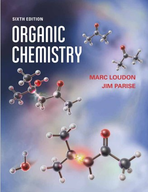In aqueous solution at pH 3, the hydrolysis of phthalamic acid to phthalic acid (see the
Chapter 21, Problem 21.63(choose chapter or problem)
In aqueous solution at pH 3, the hydrolysis of phthalamic acid to phthalic acid (see the reaction in Fig. P21.63) is 105 times faster than the hydrolysis of benzamide under the same conditions. Furthermore, an isotope doublelabeling experiment gives the results shown in Fig. P21.63 (* 5 18O, # 5 13C). Phthalic anhydride (see p. 1047) was postulated as an intermediate in this reaction. (a) Using the curved-arrow notation, show how phthalic anhydride is formed from the starting materials. (b) Show how the intermediacy of phthalic anhydride can explain the double-labeling experiment. (c) Explain why this mechanism results in a large rate acceleration. (Hint: See Sec. 11.8.)
Unfortunately, we don't have that question answered yet. But you can get it answered in just 5 hours by Logging in or Becoming a subscriber.
Becoming a subscriber
Or look for another answer
